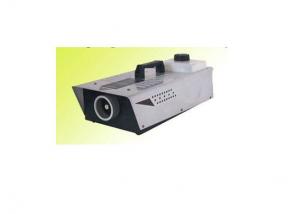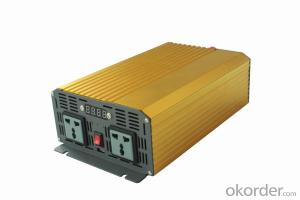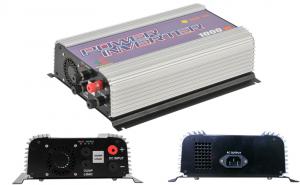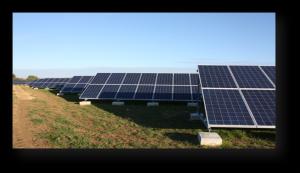3000w Solar Power Inverter
3000w Solar Power Inverter Related Searches
Cover For Solar Inverter Wifi For Solar Inverter Canopy For Solar Inverter Ct For Solar Inverter Inverter For Rv Solar Spd For Solar Inverter Solar With Electric Inverter Rv Solar Setup With Inverter High Voltage Solar Inverter Best Solar Inverter In KenyaHot Searches
Type Of Inverter For Solar Types Of Inverter For Solar Used Solar Inverter For Sale Inverter Size For Solar System Solar Edge Inverter For Sale 5kw Solar Inverter For Sale Solar Inverter For Sale Solar Inverter For Battery Solar Inverter For Split Ac Solar Inverter For Laptop Solar Inverter For Fridge Solar With Inverter Price Solar Inverter With 2 Battery Solar Inverter Price In China Best Solar Inverter In China Solar Inverter Price In Dubai Solar Inverter Price In Uae Solar Inverter Price In Kenya Solar Inverter Price In Kerala Type Of Inverter For Solar3000w Solar Power Inverter Supplier & Manufacturer from China
Okorder.com is a professional 3000w Solar Power Inverter supplier & manufacturer, offers integrated one-stop services including real-time quoting and online cargo tracking. We are funded by CNBM Group, a Fortune 500 enterprise and the largest 3000w Solar Power Inverter firm in China.Hot Products
FAQ
- A solar inverter handles voltage dips or surges in the grid by incorporating various protective mechanisms. During a voltage dip, the inverter's control system detects the change and adjusts its power output accordingly to maintain a stable voltage and frequency. It may also utilize energy storage systems to compensate for the temporary drop in grid voltage. In the case of voltage surges, the inverter employs surge protection devices to prevent damage to the system. Additionally, advanced inverters may have built-in voltage regulation capabilities to stabilize the output voltage even during significant fluctuations in the grid.
- No, a solar inverter cannot be directly used with a string inverter system. A solar inverter converts the direct current (DC) generated by the solar panels into usable alternating current (AC) electricity. On the other hand, a string inverter manages the output of multiple solar panels connected in series, converting the DC power from the panels to AC power for the grid. These two types of inverters serve different functions and are not compatible with each other.
- The different output waveforms of a solar inverter can vary depending on the type and design of the inverter. The most common output waveform is a modified sine wave, which is a stepped approximation of a true sine wave. However, some solar inverters can produce a pure sine wave output, which is an exact replication of the smooth sinusoidal waveform found in utility power. Additionally, there are also solar inverters that can produce a square wave or a quasi-square wave output waveform. The choice of output waveform depends on the specific application and the compatibility requirements of the connected appliances or equipment.
- The temperature can significantly affect the performance of a solar inverter. As the temperature increases, the efficiency of the inverter decreases. This is because the internal components of the inverter can overheat, leading to a decrease in power conversion efficiency. Additionally, high temperatures can also cause voltage drops and create thermal stress on the components, which can further impact the performance and longevity of the inverter. Therefore, it is crucial to consider temperature management and cooling mechanisms to ensure optimal performance and reliability of a solar inverter.
- No, a solar inverter cannot be used for both single-phase and three-phase applications. The type of inverter required depends on the specific electrical requirements of the system. Single-phase inverters are designed for single-phase applications, while three-phase inverters are specifically designed for three-phase applications.
- Yes, a solar inverter can be used with a solar-powered desalination system. A solar inverter is responsible for converting the direct current (DC) electricity produced by solar panels into alternating current (AC) electricity that can be used to power electrical devices. In the case of a solar-powered desalination system, the solar inverter would be essential to convert the DC electricity generated by the solar panels into AC electricity to power the desalination equipment and ensure the system functions properly.
- Yes, a solar inverter can be used for off-grid applications. Off-grid systems typically rely on solar panels to generate electricity, and a solar inverter is essential in converting the direct current (DC) generated by the panels into alternating current (AC) which can be used to power various appliances and devices. The inverter also manages the flow of electricity, ensures system stability, and may include features like battery charging and energy storage capabilities, making it suitable for off-grid applications where no grid connection is available.
- Yes, a solar inverter can be used with a solar-powered security system. A solar inverter is essential for converting the direct current (DC) generated by solar panels into alternating current (AC) that can be used to power the security system. By using a solar inverter, the solar-powered security system can efficiently utilize and store the energy generated by solar panels, ensuring continuous operation even during periods of low sunlight.





































